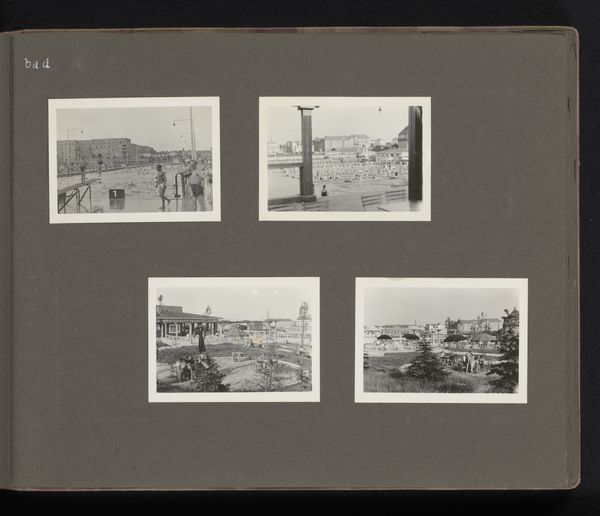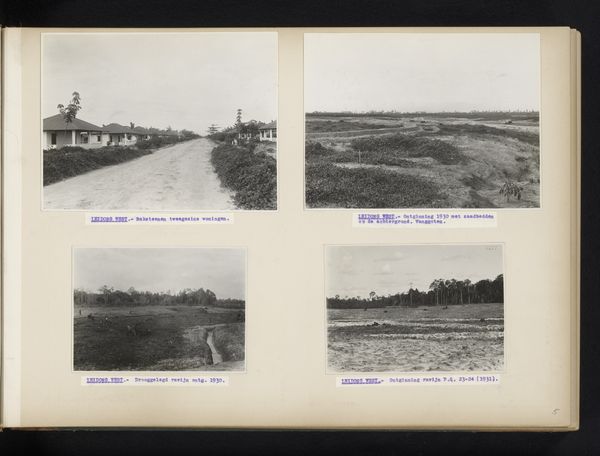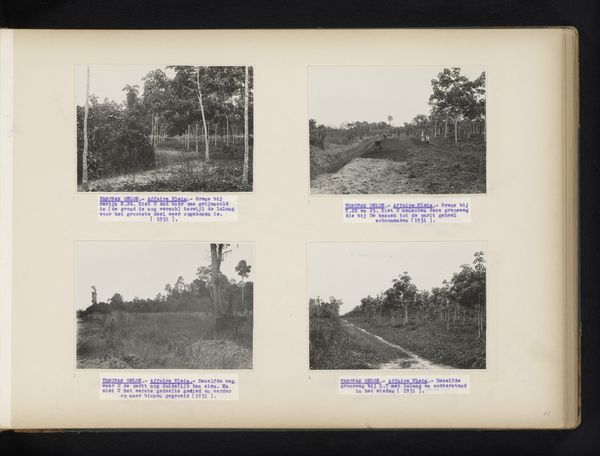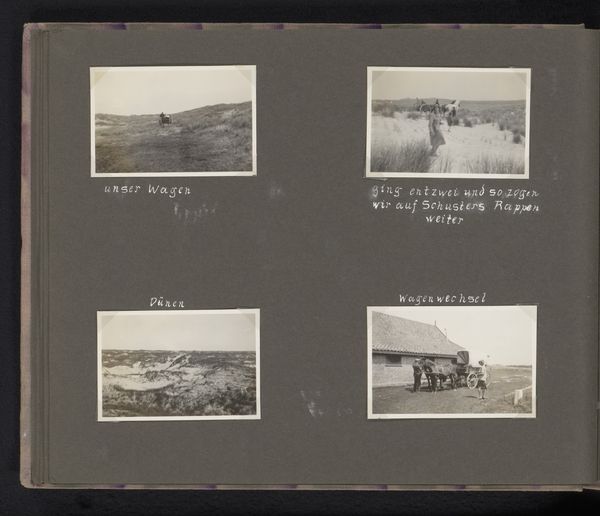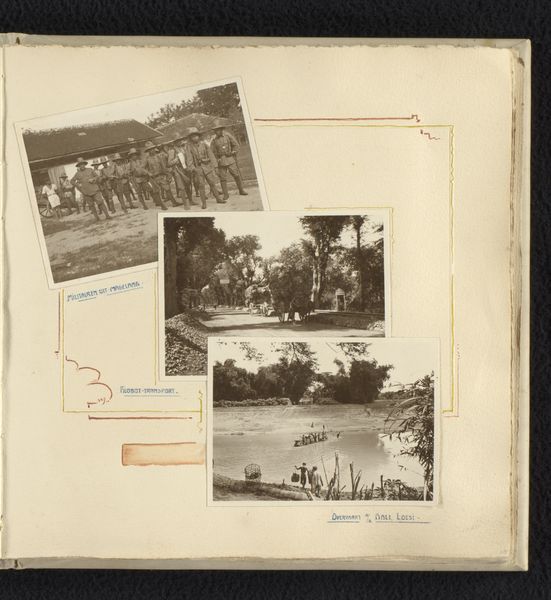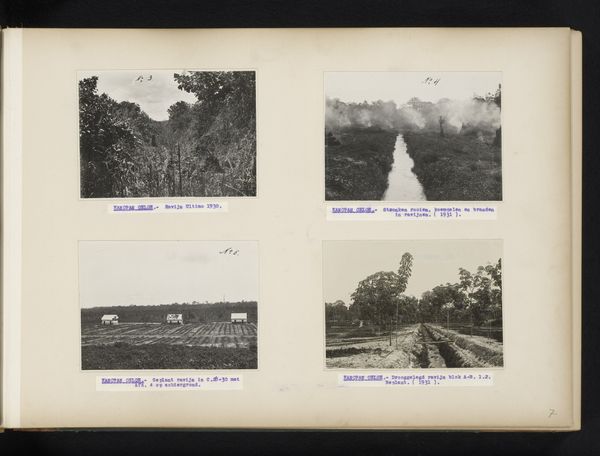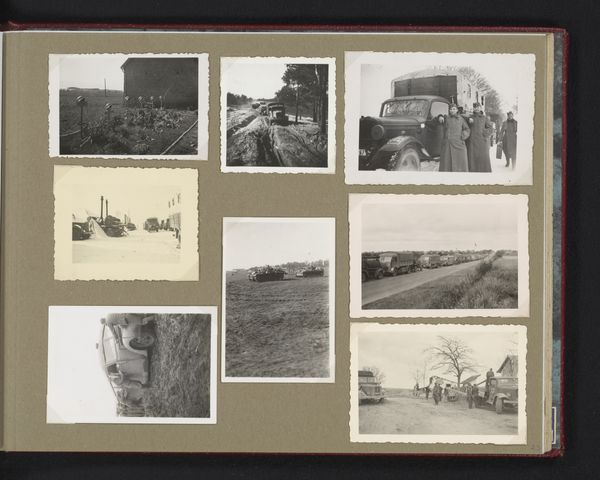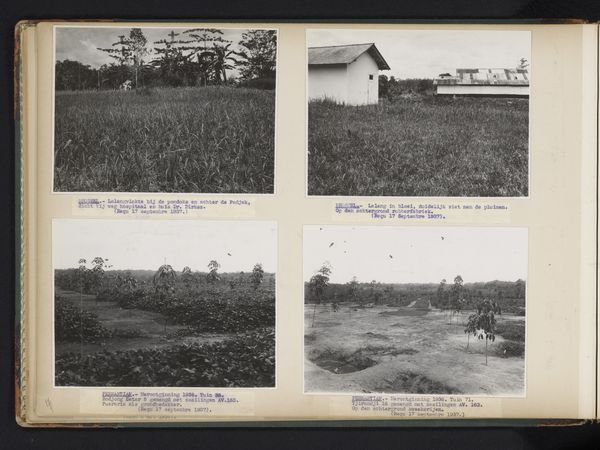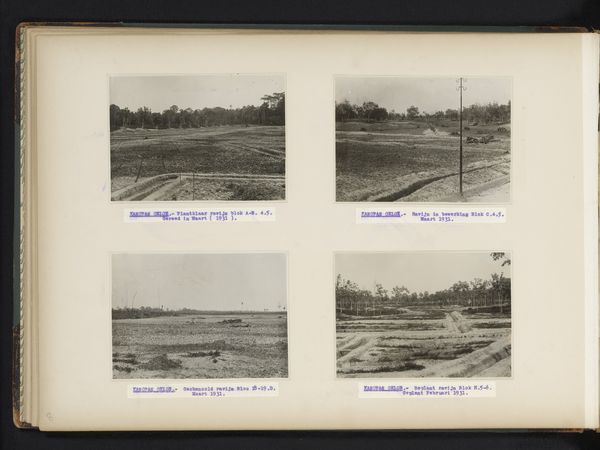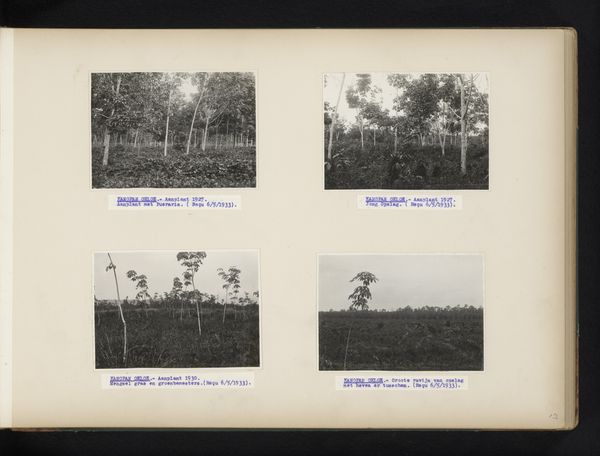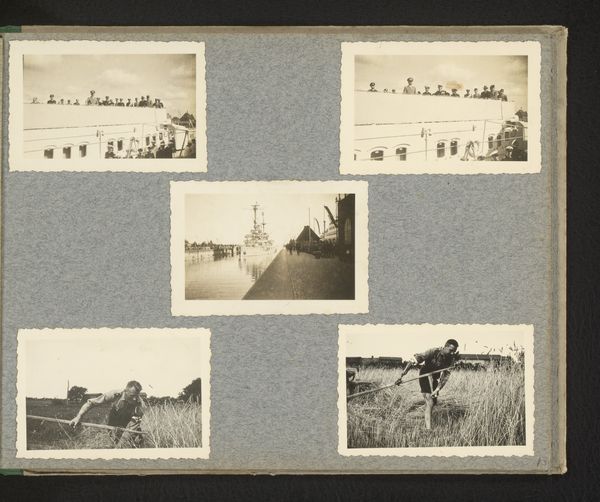
photography, gelatin-silver-print
#
landscape
#
photography
#
gelatin-silver-print
#
modernism
Dimensions: height 80 mm, width 112 mm, height 338 mm, width 476 mm
Copyright: Rijks Museum: Open Domain
Curator: This is a gelatin-silver print titled "Aanplant en bedrijfsgebouwen," which translates to "Planting and Company Buildings." It's an anonymous work from somewhere between 1927 and 1931. Editor: There’s a haunting quality about this, the repeated patterns and stark tones lend the feeling of a disquieting dream, like a world being manufactured, a bit sterile even. Curator: Absolutely. Looking closely, you can see the grid-like organization in each image, speaking to a very deliberate reshaping of the landscape for industrial purposes, which is the hallmark of modernist values reflected in social change and photographic aesthetics. Editor: It definitely strikes a somber tone, reflecting the transition and perhaps even the unsettling realities of modernism at the time. I keep seeing how it symbolizes a human imprint… almost as a premonition about exploitation, given those repeated motifs, as a cultural imposition on nature. Curator: The photographer's choice of the gelatin-silver print would offer stark contrasts that highlights the texture and labor in land and buildings; you feel how the landscape is a medium itself, used for a tangible product. How these elements—the physical land and its inhabitants—contributed labor under specific organizational hierarchies and global capitalism. Editor: Seeing the almost eerie silence of this photo, a ghostly, material reality. I find myself interpreting it as the intrusion of technology. Not just modernism itself, but what these landscapes were actually *for.* It brings to light themes of transformation, domination and almost ghostly visions of progress. Curator: And perhaps a critical reminder that photographic landscapes are rarely objective, especially during moments of such intense material and ideological shifts. This invites deeper reflections about land usage. Editor: Well said; seeing the artwork from these perspectives helps to see even deeper than before into cultural commentary, beyond a simple rendering. Curator: Agreed, the photographic images and cultural context behind "Planting and Company Buildings” presents important stories about 20th-century culture.
Comments
No comments
Be the first to comment and join the conversation on the ultimate creative platform.
